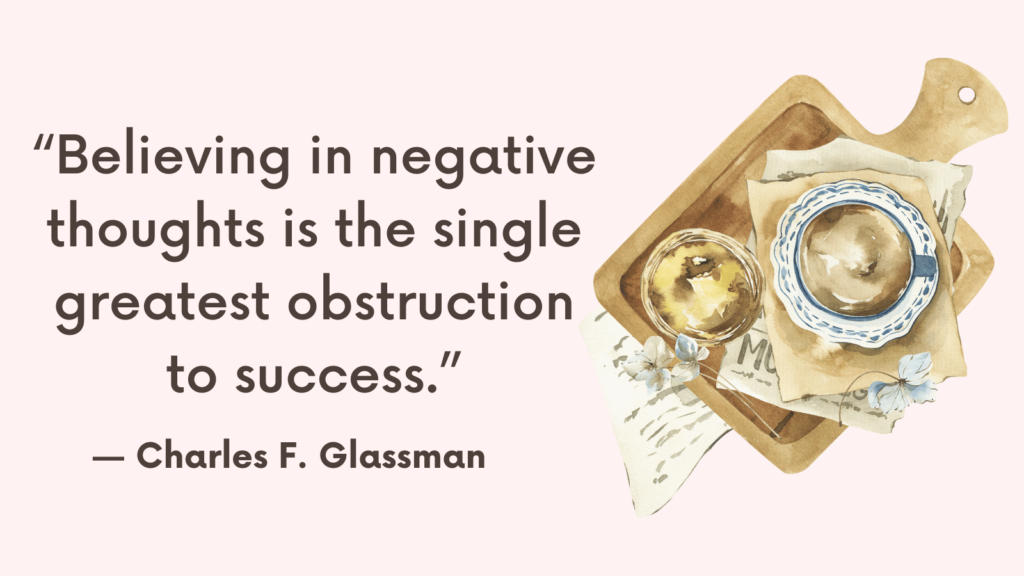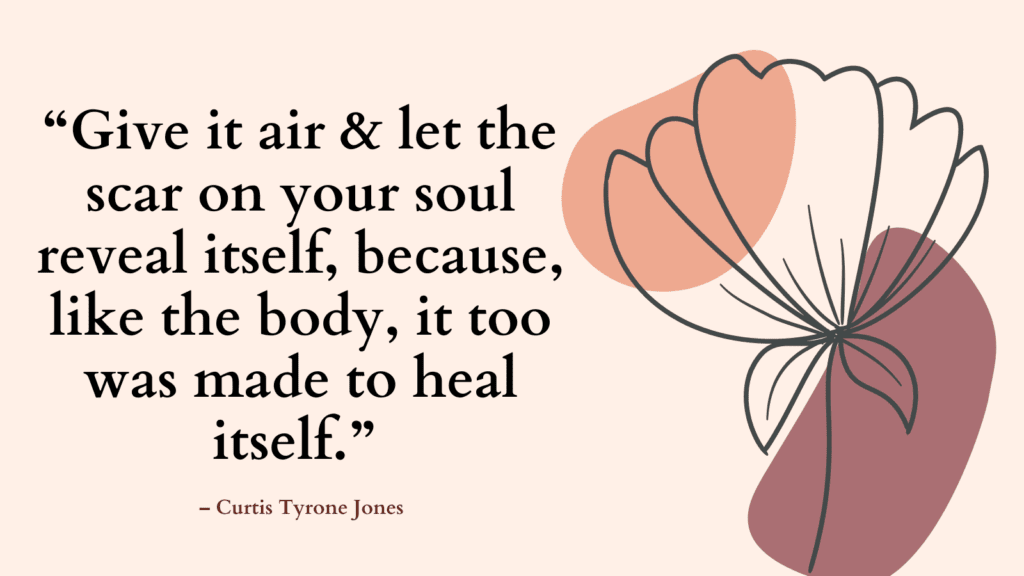In this post, you’re going to find out the reason why intrusive thoughts feel so real.
What Are Intrusive Thoughts?
Intrusive thoughts are unwanted, involuntary, and distressing thoughts, images, or impulses that enter an individual’s consciousness repeatedly and persistently.
These thoughts often involve themes that are highly upsetting, frightening, or inconsistent with the individual’s values, leading to significant emotional discomfort and anxiety.
1. Content of Intrusive Thoughts:
– Intrusive thoughts can encompass a wide range of content, including fears of harm befalling oneself or others, disturbing sexual or violent imagery, irrational doubts about one’s actions or decisions, and blasphemous or taboo thoughts.
– They are typically intrusive in nature, meaning that they arise unexpectedly and involuntarily, often causing distress due to their disturbing or unsettling content.
Related: Impulsive vs Intrusive Thoughts (& How to Manage Them)
2. Prevalence and Normalization:
– It is important to recognize that intrusive thoughts are a common human experience and are not indicative of one’s true intentions or desires. Research indicates that the majority of individuals have experienced intrusive thoughts at some point in their lives.
– While these thoughts can evoke significant distress, it is essential to understand that they do not define one’s character or moral compass.
3. Association with Mental Health Conditions:
– Intrusive thoughts are commonly associated with anxiety disorders, particularly obsessive-compulsive disorder (OCD), where they may manifest as obsessions – persistent, unwanted, and intrusive thoughts, urges, or images.
– However, intrusive thoughts can also occur in individuals without a diagnosed mental health condition, and their presence does not necessarily indicate the presence of a specific disorder.
4. Impact on Emotional Well-Being:
– Individuals experiencing intrusive thoughts often report profound emotional distress, anxiety, guilt, or shame. The persistent and distressing nature of these thoughts can significantly impact an individual’s daily functioning, interpersonal relationships, and overall quality of life.
– Feelings of powerlessness, fear of judgment, and a sense of being fundamentally flawed may accompany the experience of intrusive thoughts, contributing to psychological distress.
Related: How To Stop Self-Critical Thoughts Using These Top 10 Techniques
Why Do Intrusive Thoughts Feel So Real?
1. Amygdala Activation
Intrusive thoughts often feel intensely real due to the activation of the amygdala, a brain structure associated with emotional processing and threat detection.
When intrusive thoughts occur, the amygdala initiates a rapid emotional response, triggering feelings of fear, anxiety, or discomfort.
This heightened emotional reaction can make the intrusive thoughts seem exceptionally vivid and compelling.
2. Sensory Imagery
The brain has the remarkable ability to generate vivid mental imagery that closely resembles sensory experiences.
When intrusive thoughts manifest as mental images or vivid scenarios, they can feel remarkably real, as if they are actually happening.
This sensory component contributes to the intensity and realism of the intrusive thoughts.
3. Cognitive Fusion
Intrusive thoughts often lead to cognitive fusion, where individuals become entangled or fused with the content of their thoughts.
This fusion creates a sense of identification with the intrusive thoughts, making them feel more real and personally significant.
Individuals may struggle to distance themselves from the content of the thoughts, amplifying their impact.
Related: Future Tripping: Top 9 Ways to Avoid Future-Tripping
4. Perceived Threat
Intrusive thoughts frequently involve themes of danger, harm, or potential negative outcomes.
The perceived threat embedded within these thoughts can evoke a strong sense of urgency and concern, leading individuals to perceive the thoughts as genuine warnings or indications of impending harm.
This perception further amplifies the sense of reality associated with the intrusive thoughts.
5. Memory and Learning
Intrusive thoughts can be reinforced by memory processes and learning mechanisms.
If an individual experiences significant distress or anxiety in response to certain intrusive thoughts, the brain may encode these reactions, making it more likely for similar intrusive thoughts to trigger intense emotional responses in the future.
This learned association can contribute to the compelling nature of intrusive thoughts.
Related: How to Stop “What If” Anxiety Thinking?
How to Manage Intrusive Thoughts?
Here are several approaches for managing intrusive thoughts:
1. Cognitive-Behavioral Techniques:
– Thought Records: Engaging in the systematic identification and evaluation of intrusive thoughts using thought records can help challenge and reframe distorted thinking patterns. By examining the evidence for and against the intrusive thoughts, individuals can develop more balanced and realistic perspectives.
– Cognitive Restructuring: This technique involves identifying cognitive distortions, such as catastrophizing or black-and-white thinking, that contribute to the intensity of intrusive thoughts. Through cognitive restructuring, individuals learn to reframe these distortions and adopt more adaptive and rational thought patterns.
2. Mindfulness Practices:
– Mindfulness Meditation: Practicing mindfulness can enhance present-moment awareness and non-judgmental acceptance of one’s thoughts and emotions. By observing intrusive thoughts with equanimity and cultivating an attitude of detachment, individuals can reduce the emotional reactivity and distress associated with these thoughts.
– Mindful Breathing: Engaging in deep, diaphragmatic breathing while acknowledging the presence of intrusive thoughts can help regulate emotional arousal and promote a sense of calmness and groundedness.
Related: Best 6 Mindfulness Exercises For Beginners (+FREE Resources)
3. Exposure and Response Prevention (ERP):
– ERP is particularly beneficial for individuals experiencing intrusive thoughts as part of obsessive-compulsive disorder (OCD).
This therapeutic approach involves gradual exposure to the triggers of intrusive thoughts, coupled with the prevention of compulsive responses.
Over time, this process can lead to habituation and reduced anxiety in response to the intrusive thoughts.
4. Acceptance and Commitment Therapy (ACT):
– ACT emphasizes acceptance of internal experiences, including intrusive thoughts, while encouraging individuals to align their behaviors with their values and goals.
By fostering psychological flexibility and self-compassion, ACT can help individuals reduce the impact of intrusive thoughts on their overall well-being.
5. Healthy Lifestyle Practices:
– Regular Exercise: Engaging in physical activity can contribute to stress reduction and the regulation of neurotransmitters implicated in mood and anxiety. Exercise also offers an opportunity for distraction from intrusive thoughts and promotes overall mental and physical health.
– Balanced Nutrition and Sleep: Prioritizing a balanced diet and adequate sleep can support emotional regulation and resilience, potentially reducing the susceptibility to heightened distress in response to intrusive thoughts.
6. Self-Compassion and Self-Care:
– Cultivating self-compassion can foster a kind and understanding attitude toward oneself in the face of intrusive thoughts. Engaging in self-care activities that promote relaxation, enjoyment, and connection with supportive others can buffer against the impact of intrusive thoughts.
Related: Best 100 Self Care Affirmations To Honor Yourself

FAQs
Why do I have thoughts that feel so wrong or scary?
Everyone experiences random thoughts — the brain is constantly generating them. What makes intrusive thoughts feel so terrifying is that they usually go against your values or identity. If you’re kind, loving, and moral, an intrusive thought that suggests otherwise will deeply disturb you.
This dissonance is what makes the thought feel so powerful. But remember: a thought is not an intention. Intrusive thoughts are not a reflection of who you are — they’re just mental noise.
Do intrusive thoughts mean I secretly want to act on them?
No. In fact, the very fact that the thought distresses you means it’s not aligned with your true self. People who are concerned by intrusive thoughts are usually the least likely to act on them.
Intrusive thoughts thrive on guilt, shame, and self-doubt. The more you fear them, the more power they seem to have. Recognizing them as mental junk — not hidden desires — is a key step to healing.
Are intrusive thoughts a sign of mental illness?
Not necessarily. Occasional intrusive thoughts are extremely common and happen to nearly everyone. However, if they become persistent, distressing, or begin to interfere with daily life, they could be a symptom of:
- Obsessive-Compulsive Disorder (OCD)
- Anxiety disorders
- Post-Traumatic Stress Disorder (PTSD)
- Depression
In these cases, the thoughts aren’t the problem — it’s the way they’re interpreted and responded to. A mental health professional can help you differentiate between harmless brain static and symptoms of a treatable condition.
What’s the difference between an intrusive thought and a normal worry?
Normal worries tend to be realistic, specific, and solvable — like worrying about being late or forgetting a task. Intrusive thoughts, on the other hand, are often irrational, out-of-the-blue, and completely disconnected from your behavior or intentions.
For example:
- Worry: “Did I lock the door?”
- Intrusive thought: “What if I purposely left the door open so someone could break in?”
One feels grounded in reality; the other feels absurd — and yet more upsetting.
Why do intrusive thoughts get worse when I try to stop them?
Because resistance feeds them. When you try to push an intrusive thought away, you’re actually telling your brain that the thought is important and dangerous. This creates a loop:
- The thought pops up.
- You panic and try to suppress it.
- Your brain marks it as a threat.
- The thought comes back stronger.
This is called the “white bear problem” — the harder you try not to think about something, the more it dominates your mind.
Should I confess or talk about every intrusive thought?
While sharing distressing thoughts with a trusted person can reduce shame, constant confessing or reassurance-seeking can become part of the problem — especially for those with OCD. Repeatedly asking, “Am I a bad person for thinking this?” or “Would someone else think this too?” may feel soothing short-term but reinforces anxiety long-term.
Instead, work on tolerating uncertainty and accepting that thoughts don’t define your morality. If you need support, consider talking to a therapist who understands OCD or anxiety-related thought patterns.
What makes intrusive thoughts stick around?
Intrusive thoughts tend to linger when we:
- Give them emotional weight or meaning
- Try to suppress or control them
- Avoid situations that “trigger” the thoughts
- Engage in compulsive checking, praying, confessing, or researching
All of these responses signal to your brain: This thought is dangerous. The goal is to normalize the thought’s presence — not to believe it, fight it, or fix it.
Can stress or lack of sleep trigger intrusive thoughts?
Yes — both stress and sleep deprivation can significantly increase the frequency and intensity of intrusive thoughts. When your brain is tired or overwhelmed, it has a harder time filtering out irrelevant or irrational content. You’re more likely to experience racing thoughts, poor impulse control, and heightened emotional reactivity.
Do certain personality types experience them more?
People who are highly conscientious, empathetic, or perfectionistic tend to be more distressed by intrusive thoughts. These individuals hold themselves to high moral standards, making them more reactive to thoughts that feel out of line with their values.
Are some types of intrusive thoughts more common than others?
Yes. Common themes include:
- Harm: Fear of hurting yourself or others
- Sexual: Taboo or inappropriate sexual thoughts
- Religious: Blasphemous or sacrilegious thoughts (scrupulosity)
- Contamination: Fears of germs, illness, or dirt
- Moral/identity: Fear of being immoral, dishonest, or secretly bad
The content varies, but the emotional cycle of fear and doubt is often the same.
Is it ever okay to laugh at intrusive thoughts?
Yes. Humor can reduce fear and distance you from the thought’s power. Saying “Nice try, brain” or laughing at the absurdity of a thought can help break the anxiety cycle, as long as the humor isn’t used to suppress or deny your feelings.
Are intrusive thoughts ever useful?
Not directly — but your response to them can build resilience. They can highlight perfectionism, teach you how to tolerate uncertainty, and push you toward growth, therapy, or mindfulness practices.
Conclusion
If intrusive thoughts are significantly impacting your daily functioning or causing distress, seeking support from a qualified mental health professional, such as a psychologist or psychiatrist, can provide personalized guidance and interventions to address these challenges.
Remember that you are not alone in experiencing intrusive thoughts, and with appropriate support and strategies, it is possible to effectively manage and minimize their impact on your well-being.



